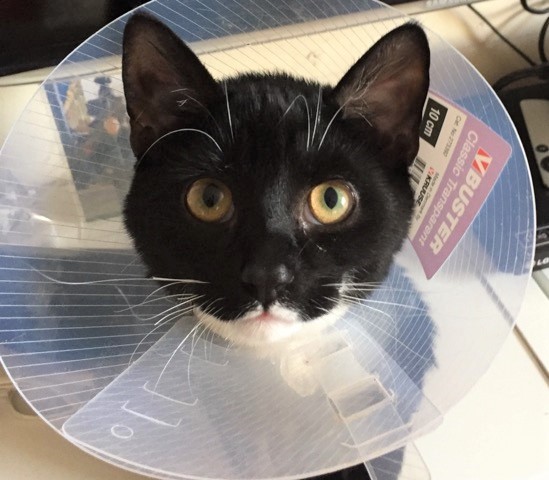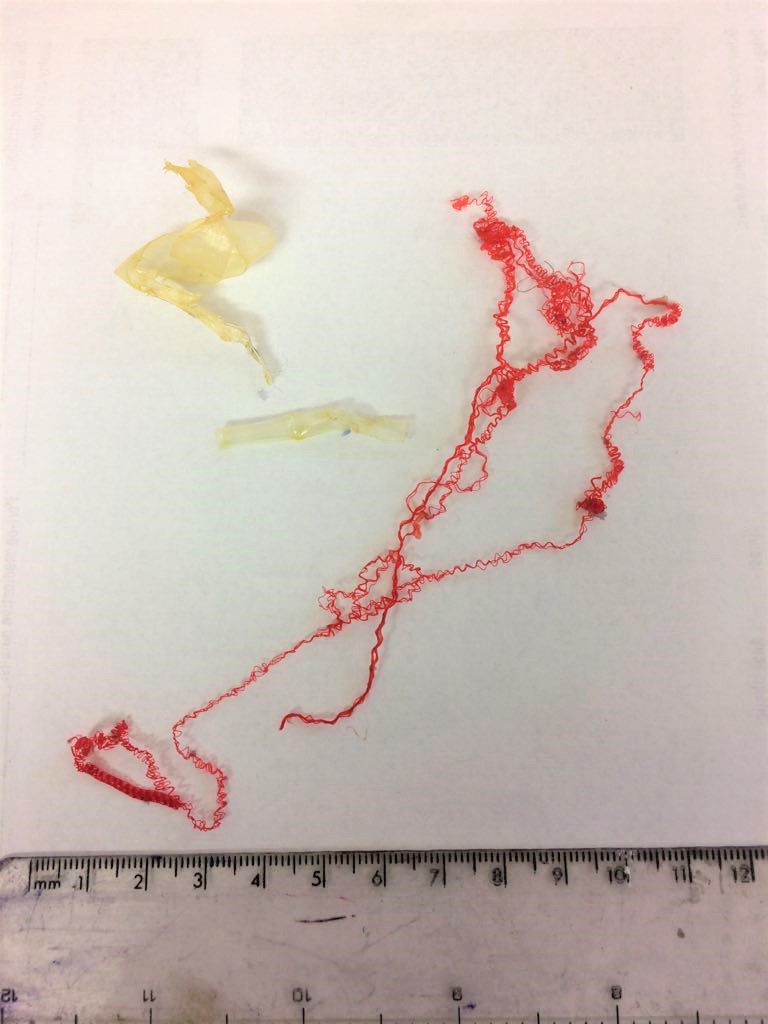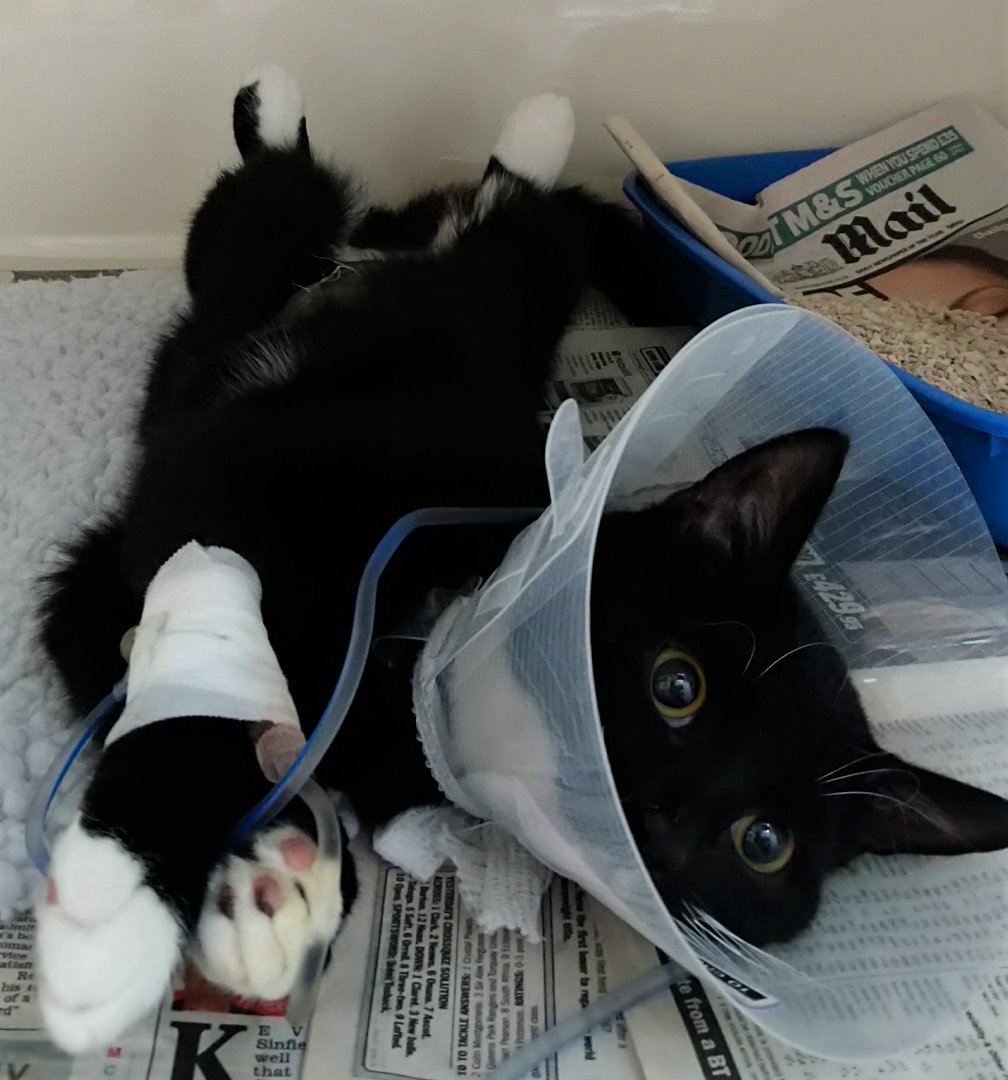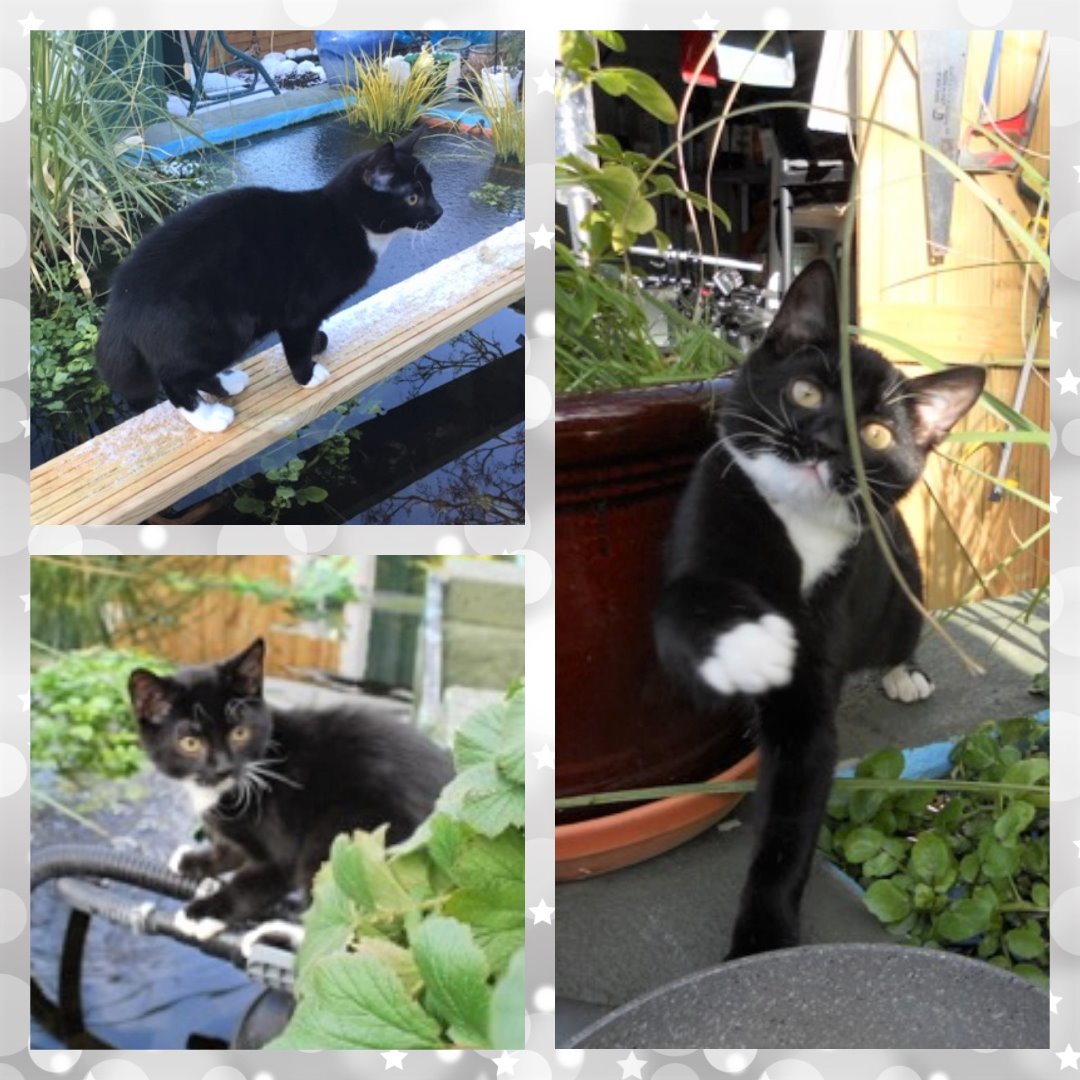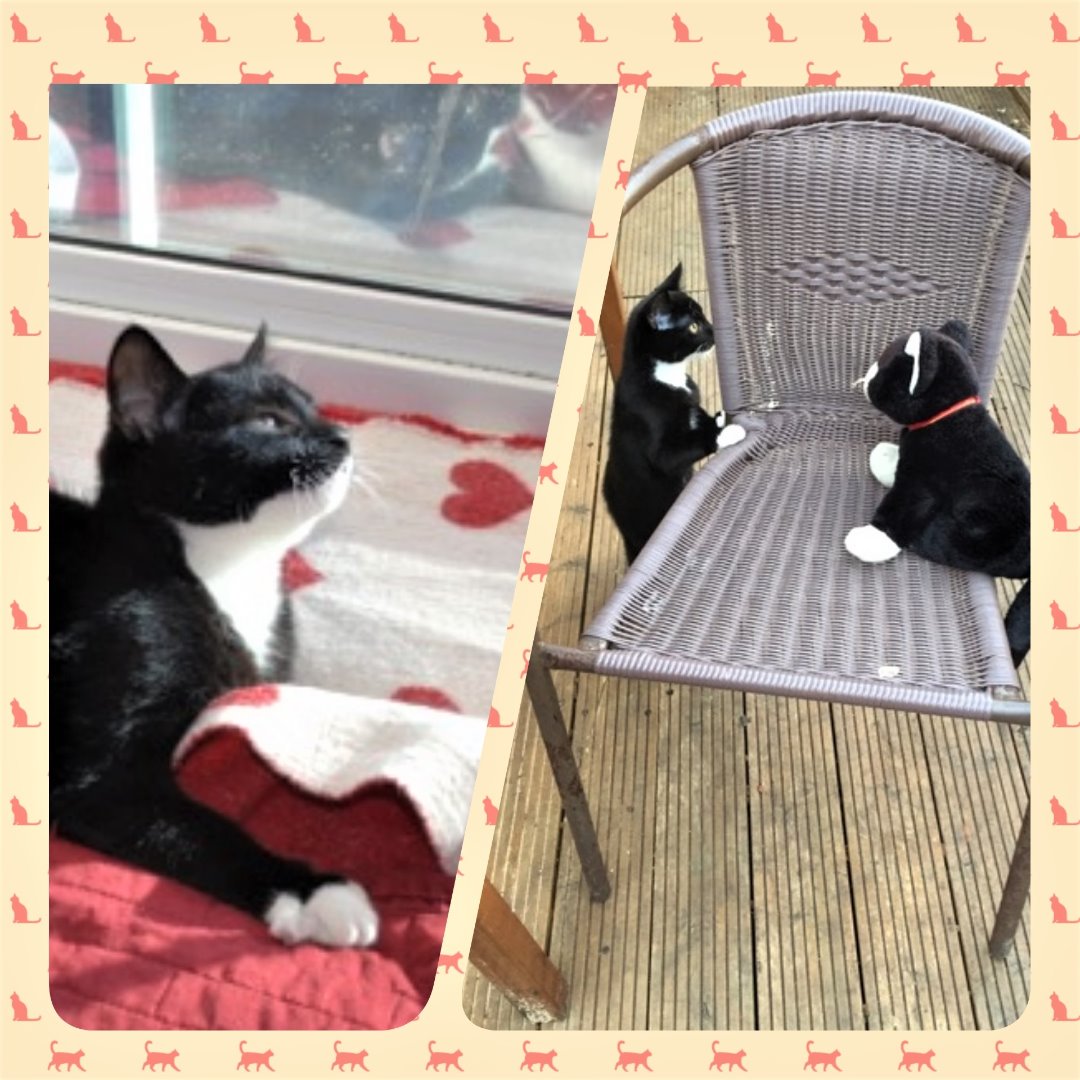The Great Dane is an unmistakeable breed. They may be a large dog but they are often referred to as gentle giants and six year old Jeffery is no exception.
 Like other large breed dogs, they are at risk of a life threatening form of bloat.
Like other large breed dogs, they are at risk of a life threatening form of bloat.
Gastric dilatation - volvulus (GDV) is a veterinary emergency which occurs as a result of the stomach filling up with gas (a bit like a balloon), becoming increasingly distended, and the gas cannot escape (dilatation). The stomach can also twist on itself impairing blood flow (volvulus).
This is a rapidly progressive emergency as the blood vessels on the stomach's surface become stretched, reducing their ability to supply blood to the stomach wall. As the stomach twists, it cuts off the blood flow to vital blood vessels, which can lead to the stomach tissue dying. Circulation is also impaired. The animal quickly deteriorates, becoming increasingly weak and shocked. This fatal process can happen within a few hours so it is important to spot the symptoms and seek immediate veterinary attention - surgery is the only cure.
Gastric dilatation - volvulus (GDV) is a veterinary emergency which occurs as a result of the stomach filling up with gas (a bit like a balloon), becoming increasingly distended, and the gas cannot escape (dilatation). The stomach can also twist on itself impairing blood flow (volvulus).
This is a rapidly progressive emergency as the blood vessels on the stomach's surface become stretched, reducing their ability to supply blood to the stomach wall. As the stomach twists, it cuts off the blood flow to vital blood vessels, which can lead to the stomach tissue dying. Circulation is also impaired. The animal quickly deteriorates, becoming increasingly weak and shocked. This fatal process can happen within a few hours so it is important to spot the symptoms and seek immediate veterinary attention - surgery is the only cure.
A few weeks ago, Jeffery's owners found themselves in this very situation. It was Sunday teatime and after finishing his dinner, Jeffery went out into the garden for a wander. His owner Karen noticed that he'd been outside for a while so went to check on him. Jeffery was pacing around the garden and he looked like he wanted to be sick. He attempted to vomit, but was unable to bring anything up apart from some thick saliva secretions
(unproductive vomiting). Jeffery was restless but he had become lethargic and kept lying down - all tell-tale signs of a GDV. Karen managed to take Jeffery indoors where he began to cry in pain and it was then that Karen noticed that Jeffery's abdomen (belly) had become swollen and distended - a classic symptom of bloat. Recognising the situation, Karen called the hospital and got in touch with the head vet Cathy who was on duty.
(unproductive vomiting). Jeffery was restless but he had become lethargic and kept lying down - all tell-tale signs of a GDV. Karen managed to take Jeffery indoors where he began to cry in pain and it was then that Karen noticed that Jeffery's abdomen (belly) had become swollen and distended - a classic symptom of bloat. Recognising the situation, Karen called the hospital and got in touch with the head vet Cathy who was on duty.
From the symptoms describ
Upon arrival, Cathy examined Jeffrey and confirmed the diagnosis .With the assistance of student nurse Becky, Jeffery was given pain relief and fluid via an intravenous drip. His owners consented to the surgery and Jeffery was admitted to the hospital. His stomach was hugely distended, so to relieve the pressure, Cathy inserted a large gauge needle through his body wall and into his stomach to allow some gas to escape. Becky set up in theatre and prepared the anaesthetic equipment . Jeffery was now stabilised enough for him to undergo the general anaesthetic required.
Once in theatre, to surgically correct the GDV, Cathy firstly needed to very carefully 'de-rotate' the stomach back into it's normal position. Jeffery's spleen had also twisted due to the movement of his stomach, so Cathy needed to place this back into it's normal position in the abdomen. Next Cathy assessed the tissues of his stomach and spleen and luckily the blood supply and tissues looked active and healthy. The next step was to pass a stomach tube down Jeffery's oesophagus and into the stomach in order to empty it's contents and further relieve the pressure. Unfortunately this procedure was unsuccessful due to the stomach content being too thick, so Cathy was then required to carry out a procedure called a gastrotomy in which an incision is made into the stomach wall. This way, Cathy was able to remove the stomach contents. The last part of the operation was to carry out a gastropexy. This is where the stomach is attached to the inside of the body wall, so it can no longer shift and twist. Throughout the emergency operation, student nurse Becky closely monitored Jeffery's general anaesthetic. 

Jeffery recovered very well from the general anaesthetic, and the surgery proved to be a success.
After a night in the hospital, Jeffery was looking so much happier and he had re-discovered his appetite. The nurses monitored him closely for signs of vomiting and discomfort as well as ensuring his surgical wound was clean and dry. He enjoyed having some gentle strolls around the garden and getting lots of attention from the nurses.
(Pictured with our head nurse Jazmin) .
 Cathy was so pleased with Jeffery's progress that she allowed him to go home just two days after his life saving operation. Fortunately the quick thinking action of his owners meant that Jeffery was seen within an hour and an half from when his first symptoms developed - this contributed to a successful outcome.
Cathy was so pleased with Jeffery's progress that she allowed him to go home just two days after his life saving operation. Fortunately the quick thinking action of his owners meant that Jeffery was seen within an hour and an half from when his first symptoms developed - this contributed to a successful outcome.
We are all so pleased to see that Jeffery has recovered so well and is a much happier boy!
For being so brave and for his gorgeous nature, Jeffery is a much deserved pet of the month!
The causes of GDV are not clearly known but there are several factors that appear to increase an individual's risk of developing the condition. Whilst any breed of dog and even cats can develop GDV, it is most commonly seen in large/giant breeds of dog which are deep chested. Nervous, anxious dogs under stress may be more prone to developing it, as are animals that eat a large meal or drink a large amount of water in one go. Eating rapidly may also contribute to the animal gulping in air. Exercising just before or after a meal is another possible factor.
In order to minimize the risk of developing GDV it is suggested that dogs should be fed frequent smaller portions of food rather than one large meal. Don't allow your dog to heavily drink in one go, especially after a meal - instead offer smaller amounts often. Strenuous exercise and excitement such as play should be avoided before and after eating.
Most importantly, be aware of the signs of a GDV - panting, discomfort, restless, pacing, lethary, drooling, unproductive attempts to vomit ( retching and only bringing up white froth ), crying and a distended abdomen ( belly ) - bloated, full appearance.
Remember, pets don't read the text books - symptoms can vary and not all symptoms will be seen. If in any doubt, do seek immediate veterinary advice.
In order to minimize the risk of developing GDV it is suggested that dogs should be fed frequent smaller portions of food rather than one large meal. Don't allow your dog to heavily drink in one go, especially after a meal - instead offer smaller amounts often. Strenuous exercise and excitement such as play should be avoided before and after eating.
Most importantly, be aware of the signs of a GDV - panting, discomfort, restless, pacing, lethary, drooling, unproductive attempts to vomit ( retching and only bringing up white froth ), crying and a distended abdomen ( belly ) - bloated, full appearance.
Remember, pets don't read the text books - symptoms can vary and not all symptoms will be seen. If in any doubt, do seek immediate veterinary advice.
Disclaimer:
The contents of the Arden House Animal Hospital


